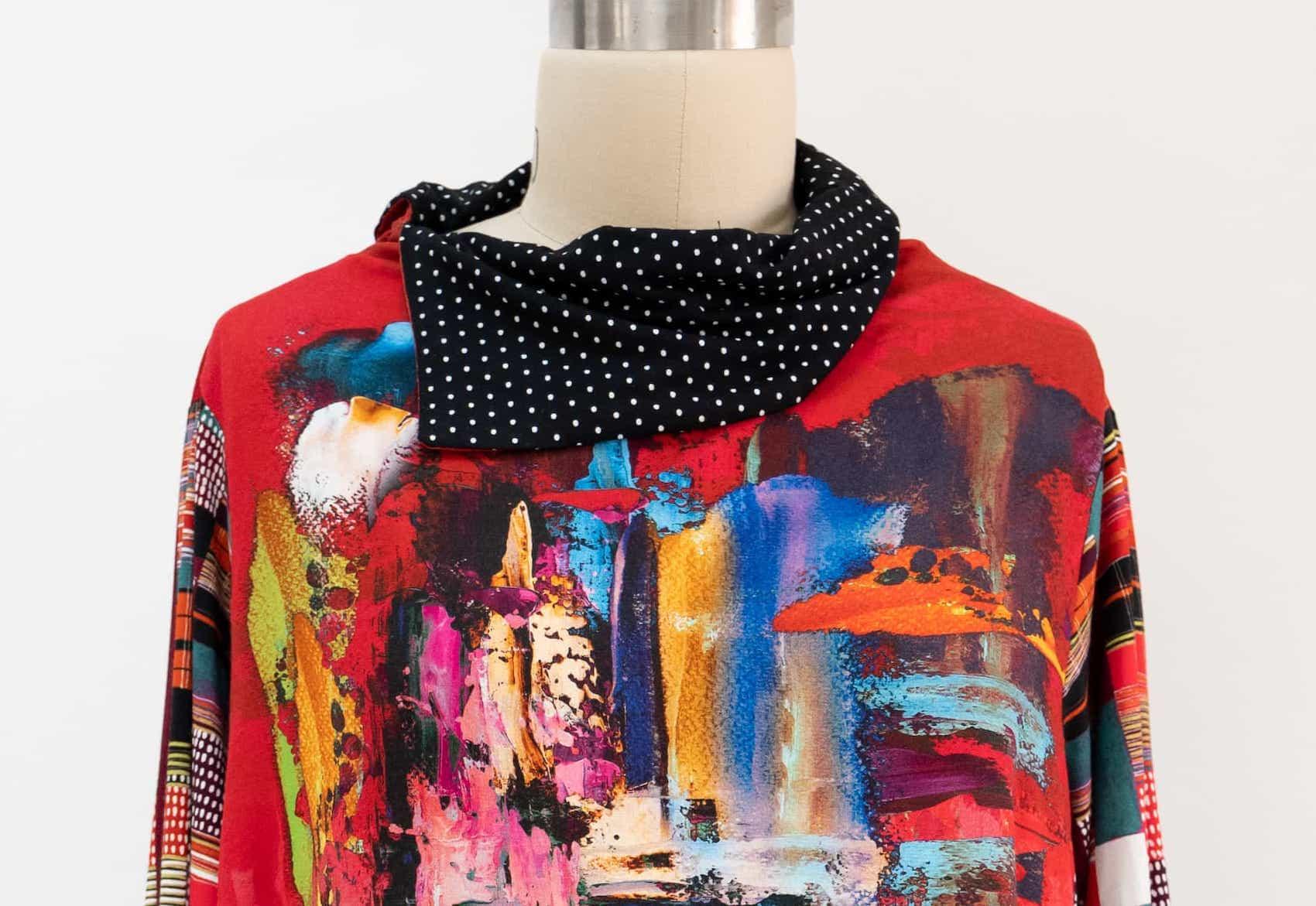Designed for fluid drapey knits, Vogue 1637 is a loose fitting straight lined tunic/top in two lengths with an asymmetrical split funnel neck which can be faced or cut all in one, has an asymmetrical hem and faced roll up sleeve. The sleeve facing is optional, you could eliminate it and use a hem instead. The neck can be left draped and as-is, or made narrow by rolling and stitching it in place. You can make this tunic/top in one color or contrast the facing, sleeves and side panels with 2 or more fabrics. Finished lengths in size 12: 26” short version, 30” long version. Easy to sew and fit too.
Choose your best length - it is easy to make longer or shorter at the hem. The style is a modern update on a turtle or cowl neck. Fitting is simple, though you want the sleeve seam to hit just at the shoulder line or slightly in (toward the neck), from there. If you are large busted, you may need a FBA (full bust adjustment), as the style is lightly fitted in the bust, then skims over the stomach and hips.
Suggested fabrics: knits only, such as fluid drapey light weight knits like rayon/lycra jersey, poly microfiber jersey, wool jersey, cotton/lycra jersey, lightweight ponte. You could use a slightly heavier knit for the front and back and sleeves and lighter more drapey knits for the side panels.

On the pattern envelope we used a Parisian microfiber for the blue solid color longer version. The weight and drape are perfect for this style, and this is a fabric we stock in black and colors in fall and winter. We combined 3 different viscose/elastine prints for the shorter version, a panel print for the front/back, a co-ordinating printed plaid and black and white dot for the contrasting pieces. The panel and print shown on the pattern envelope are sold out - but any of our Cool Combos make a good candidate for combining fabrics.





Sewing Tips
Collar facing- Mark dots.
- Break stitching at the dots - back stitching at the dot.
- HINT: stitch just up to the the notch. JUST up to, but not beyond. Ideally there is a one stitch opening (approx ⅛”), on either end of the dot. This makes a tiny hole which acts as a hinge so once the seams are trimmed and pressed, the fabric will turn without any pulling or tugging.


Neck Options
- Leave as-is, the cowl neck will lie softly front and back.
- Secure at the left shoulder seam (on the back side) by stitching a short (½”) length, stitching through the folds along the shoulder line.
- Secure at the right shoulder (on the back side), by placing the layers at a slight angle to the shoulder seam, stitching through all layers along the edge in a short, ½” length.
- Or secure by hand or invent your own!
Marcy’s Version
For the first prototype to test the pattern, I dove into my stash and used a selection of black and gray rayon/lycra jersey stripes in harmonizing shades and weights. I cut the longer length, and inadvertently put the collar opening on the opposite side - which makes little difference. I grab this top on cool mornings, find that the pocket vest, Vogue 9322 layers nicely over it.



I plan to make this in black for fall - make it in your favorite neutral and you’ll reach for it again and again!





